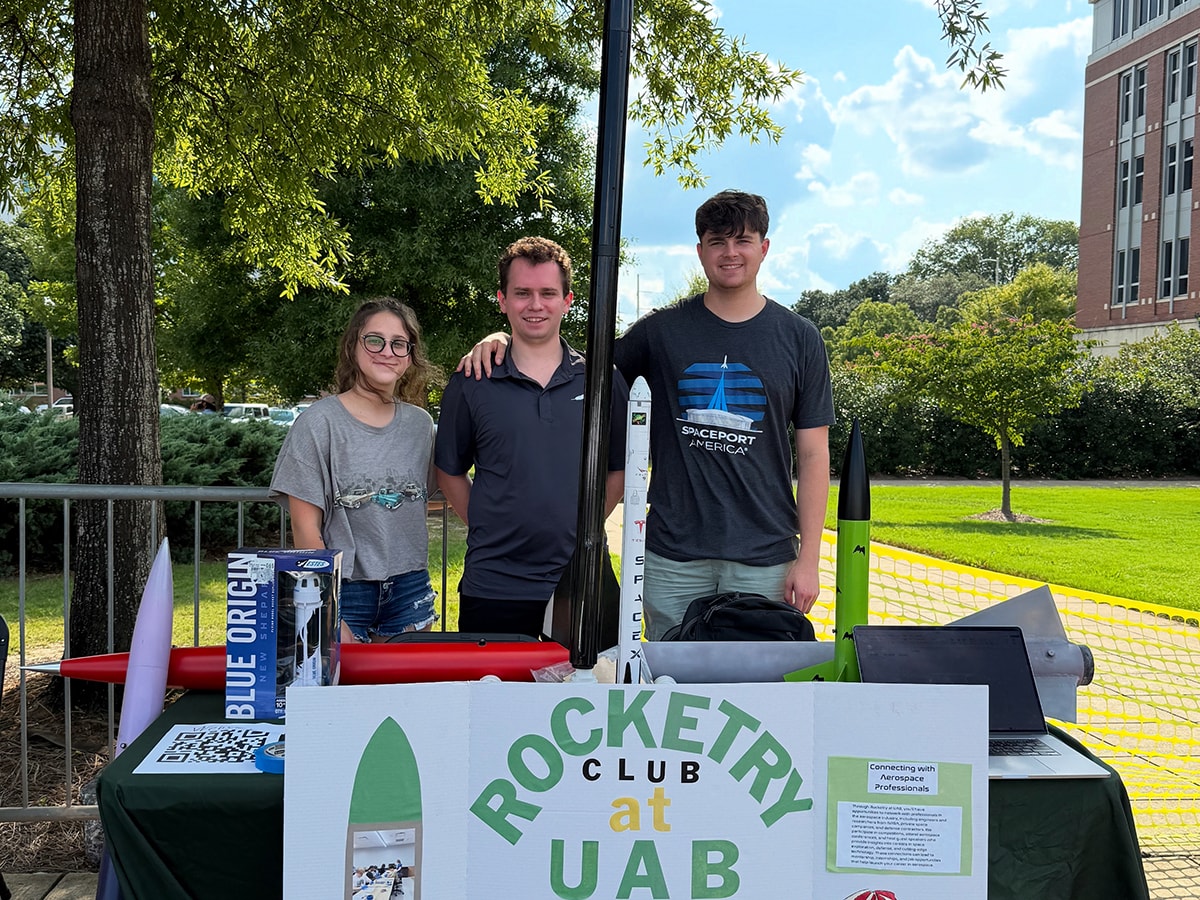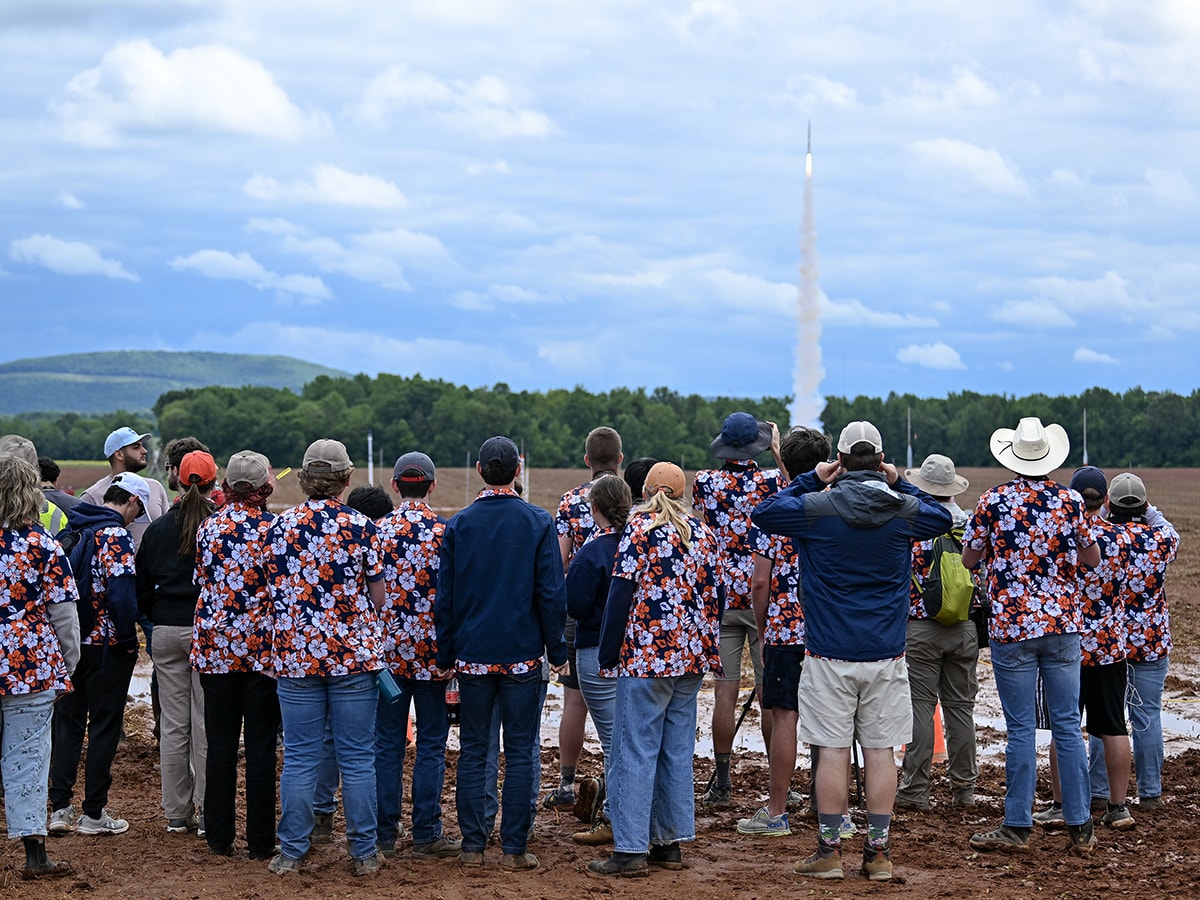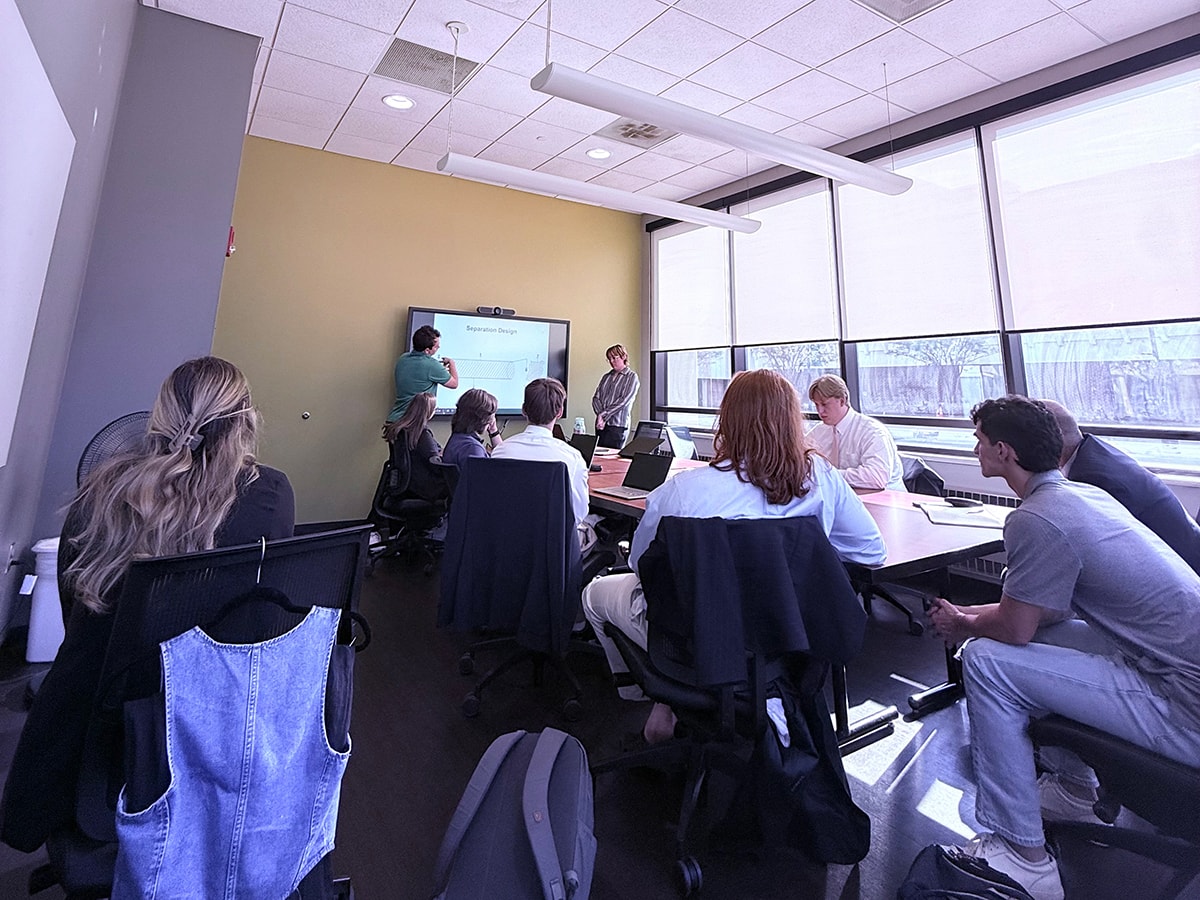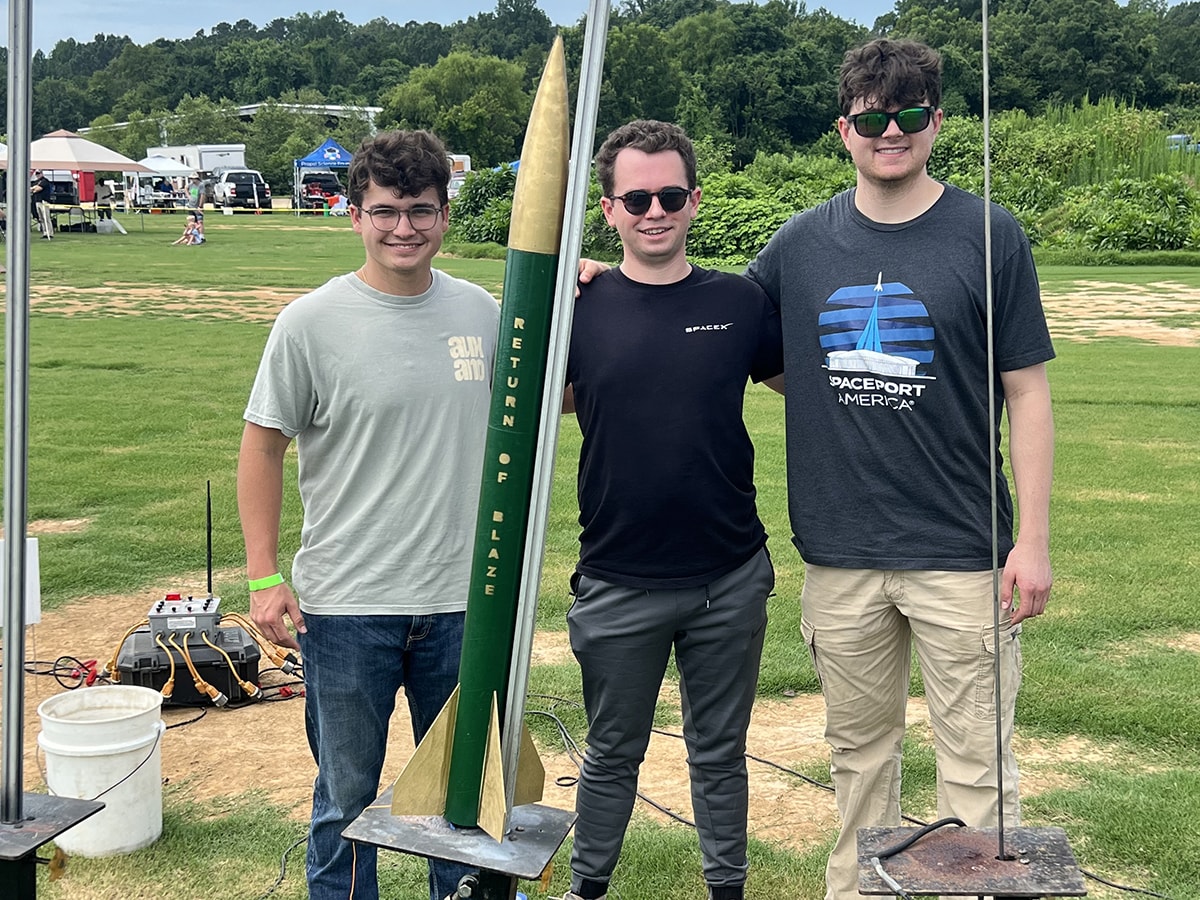 Rocketry Club members Rylie Roderick, John Francis Zech and Caleb Knight at the Student Connect Fest this fall. It will take nine months, plus or minus 2.3 seconds, for the new Rocketry Club at UAB to reach 5,000 feet over the Marshall Space Flight Center in Huntsville. At that point — apogee — they have got 105 seconds to float down to Earth, deploy a soil testing probe and transmit data back to their launch area.
Rocketry Club members Rylie Roderick, John Francis Zech and Caleb Knight at the Student Connect Fest this fall. It will take nine months, plus or minus 2.3 seconds, for the new Rocketry Club at UAB to reach 5,000 feet over the Marshall Space Flight Center in Huntsville. At that point — apogee — they have got 105 seconds to float down to Earth, deploy a soil testing probe and transmit data back to their launch area.
The Kentucky Derby bills itself as the fastest two minutes in sports, but elite rocket competitions such as NASA’s annual Student Launch Challenge have the horses beat in many ways. The full-size UAB competition rocket will be 8 feet tall (several inches higher than a horse), reach a top speed of more than 300 miles per hour (horses cannot break 50 mph) and travel significantly farther (about 10,000 feet, compared with the 6,600 feet of Churchill Downs racetrack, where the Derby is held) in less time (the entire competition, from launch to data transmission, lasts 108 seconds or so; Secretariat holds the Kentucky Derby record of 119.40 seconds).
 A student rocket launches at the 2025 NASA Student Launch Challenge. UAB's team is now preparing for the 2026 competition. Image NASA/Charles Beason
A student rocket launches at the 2025 NASA Student Launch Challenge. UAB's team is now preparing for the 2026 competition. Image NASA/Charles Beason
But rockets, like thoroughbreds, are not made in a day. The nine-month NASA Student Launch challenge attracts entries from rocket clubs at prominent universities across the country. Against the odds, UAB’s club, which launched only this year, has made the cut. In early October, club leaders, including John Francis Zech (president and transient mechanical engineer), Caleb Knight (rocketry mentor and physics Ph.D. student) and Erica Schulz (rocketry mentor and materials engineering Ph.D. student) learned that their Vulcan I rocket proposal had been selected as an official entry.
Zech, Knight and Schulz had all been involved in competitive rocketry at the high school and college levels. (Zech was part of the national championship-winning team at the University of Notre Dame.) When they arrived on campus — separately — and found out that UAB did not have a rocket club, they put in about six months of work to register as an official student organization, write a constitution, recruit a faculty advisor — Cheng-Chien Chen, Ph.D., associate professor in the Department of Physics — and start holding meetings. Bobby Campbell brings 50 years of hobby rocketry experience to the team as its technical advisor. A key early factor was obtaining funding through a NASA Alabama Space Grant Consortium grant, managed by UAB Campus Director Yogesh Vohra, Ph.D., professor and University Scholar in the Department of Physics and associate dean in the College of Arts and Sciences. “The club could not survive on grant money alone,” Knight added. “Private donors such as Adam Eason make the club’s mission financially viable. The club also gives its appreciation to the School of Engineering and Dr. Selvum Pillay for their contribution to the project, with the integration of the club and the School of Engineering through the Senior Design Capstone Project, which designs the payload of the rocket.”
 The Rocketry Club at UAB participating in a Preliminary Design Review practice with guest reviewer Tyler Nester.
The Rocketry Club at UAB participating in a Preliminary Design Review practice with guest reviewer Tyler Nester.
“When we had our first meeting, I was surprised by the interest — we had dozens of students show up,” Zech said. “I was blown away,” Schulz added.
“What the rocket team does is let people actually do the work of aerospace,” Zech said. “We are for anyone passionate about space travel. We are also preparing every single one of our members for solving incredibly difficult technical problems after they graduate. Those technical skills and the iterative NASA design process that they learn will be tools they can use for the rest of their lives.”
“Rocketry is not just engineering,” Schulz pointed out. “We need people from all disciplines. You need chemists to help choose the motors, business and finance majors to raise support, marketing majors to generate interest, physics majors to understand how design choices affect the flight characteristics, and so on.”
 Rocketry Club at UAB member Carson Brown (left), with John Francis Zech and Caleb Knight, pose with Brown's rocket, Return of Blaze, before its inaugural flight in his Level 1 High Power Rocketry Certification attempt.
Rocketry Club at UAB member Carson Brown (left), with John Francis Zech and Caleb Knight, pose with Brown's rocket, Return of Blaze, before its inaugural flight in his Level 1 High Power Rocketry Certification attempt.
In addition, members can become certified in high-powered rocketry through the National Association of Rocketry with the club’s mentorship program, Knight says. “Once people get to witness a rocket launch firsthand, they are usually hooked,” he said. “It is so exhilarating.”
Over the next several months, the team must meet a series of checkpoints to progress toward the final NASA Student Launch program competition, held April 22–26, 2026, in Huntsville. One of these checkpoints is rapidly approaching: Before the end of the fall 2025 semester, the club must successfully complete a subscale launch “of a model about 3 or 4 feet tall and 3 inches in diameter, to test our construction techniques,” Schulz said. “We will have test launches of the full-scale rocket in the spring, and we must succeed in both of those to move on in the competition.”
The full-scale model will reach 11 Gs within 2.6 seconds. “Even NASA astronauts sustain fewer Gs than we will in this rocket launch,” Zech said.
“The flight is very quick,” Knight said. “You have a burn and then coast to the top before deploying the parachute. From apogee, we only have 90 seconds to get to the ground, and then 15 seconds to communicate the results of our soil data collection.”
“Once you get the rocket on the rail, you’ll have spent nine months working on this and then you just have to back away,” Schulz said. “Within less than two minutes, you will know if it worked or not.”
The team is still looking for interested undergraduates and graduate students, its leaders note. “We would love to have some people who have a little more technical experience, but we’ll take everybody,” Schulz said. “We need people to come and paint the rocket, to help us market, to spread the word. We are super grateful that we had the experience as undergrads, and we are looking to share that with as many students as we can.”
Learn more about the Rocketry Club at UAB on their website and Engage, follow them on Instagram and Facebook, and email